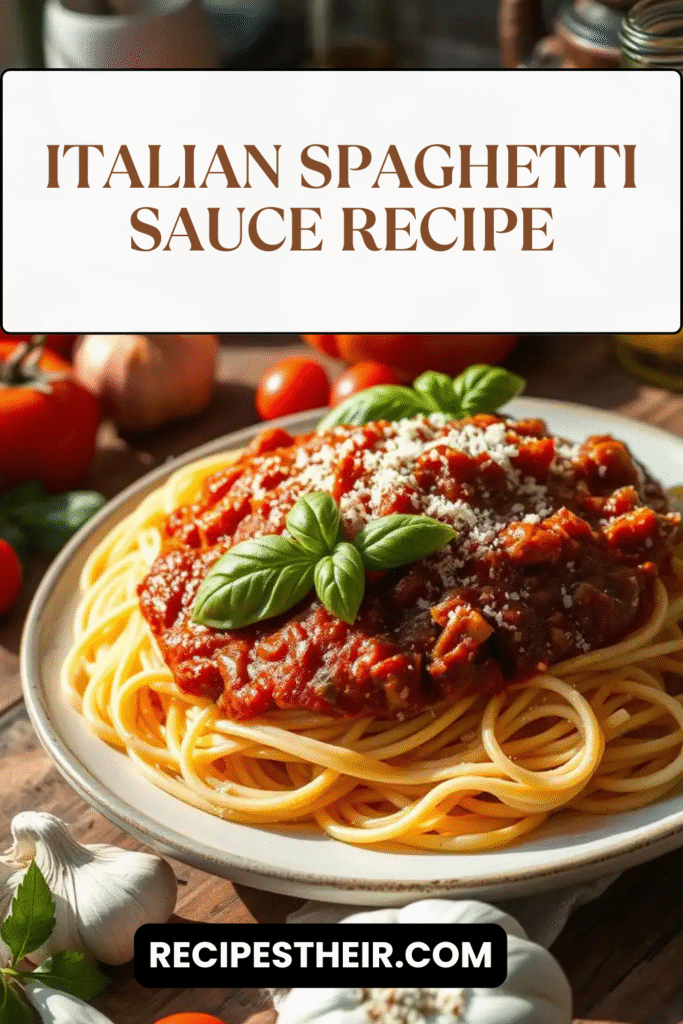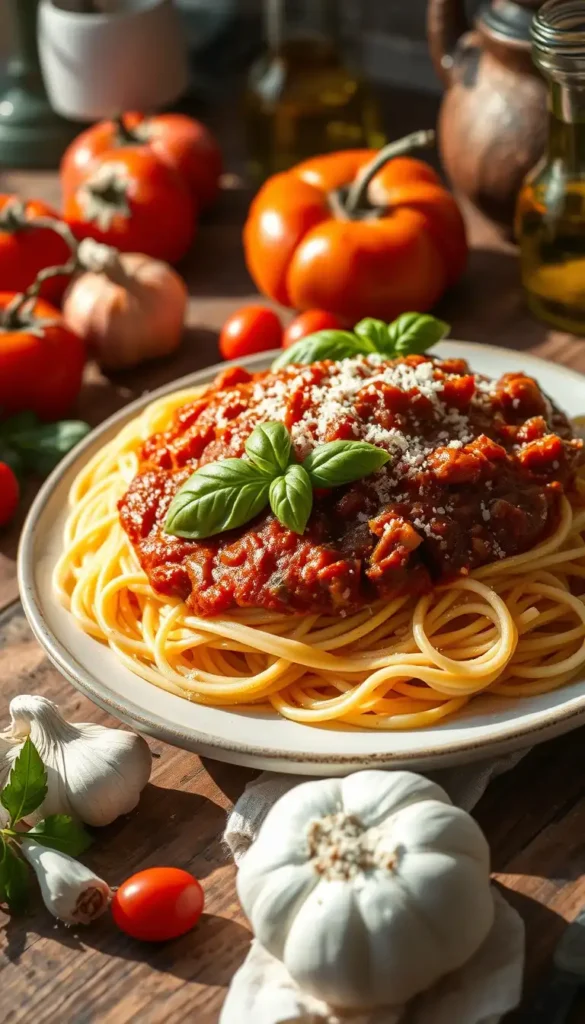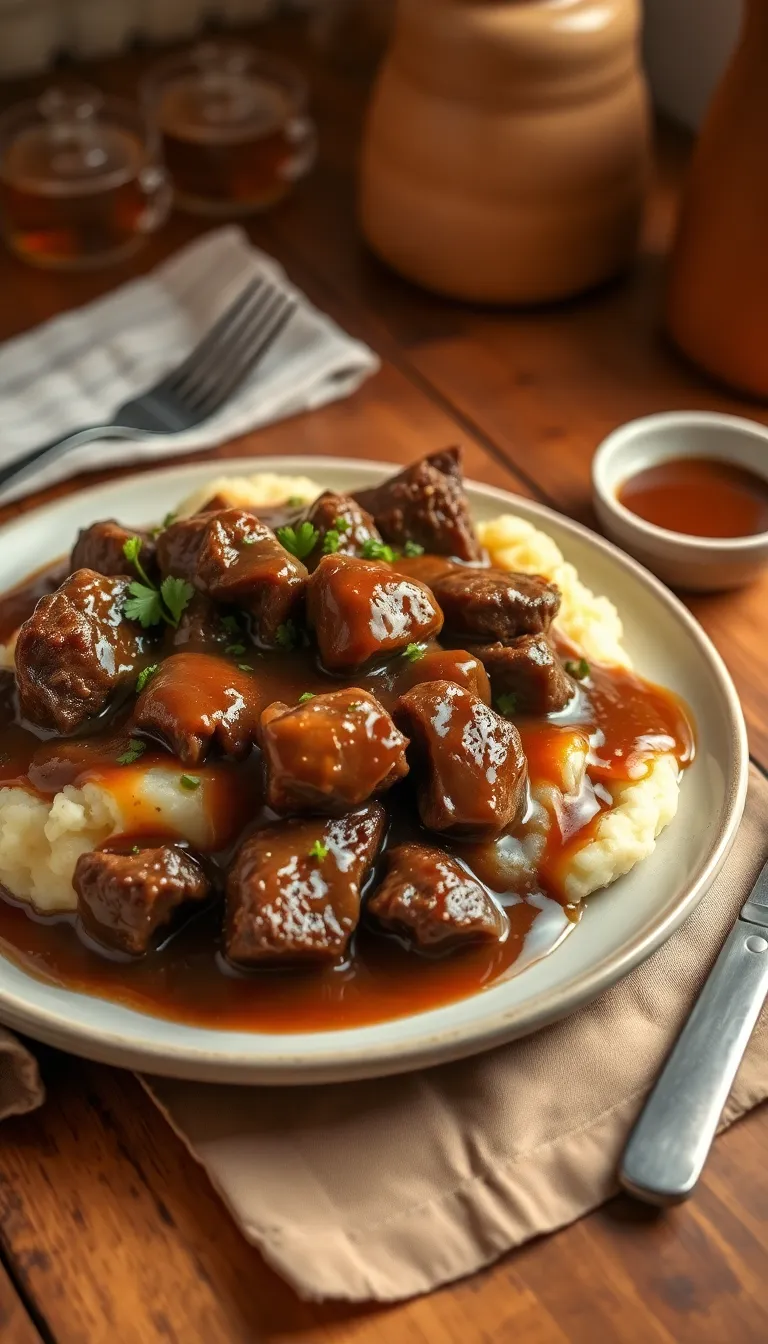Authentic Italian Spaghetti Sauce Recipe: A Taste of Italy at Home
There’s something magical about a pot of Italian spaghetti sauce simmering on the stove. The aroma of fresh tomatoes, garlic, basil, and olive oil fills the kitchen, evoking memories of cozy family dinners and rustic trattorias in the heart of Italy. Whether you’re a seasoned cook or just starting your culinary journey, mastering the art of homemade Italian spaghetti sauce is a skill that never goes out of style.
In this guide, we’ll walk you through how to make a traditional Italian spaghetti sauce recipe from scratch — rich, flavorful, and infused with love. You’ll also learn pro tips, variations, and secrets passed down through generations of Italian kitchens.

What Makes Italian Spaghetti Sauce So Special?
Authentic Italian spaghetti sauce (or sugo di pomodoro) isn’t just about throwing a few ingredients into a pot. It’s about balance, patience, and quality. Italians believe that a perfect sauce should highlight the natural sweetness of tomatoes, the freshness of herbs, and the depth that comes from slow simmering.
Here’s what sets it apart:
- Simplicity: True Italian cooking focuses on a few quality ingredients — fresh tomatoes, extra-virgin olive oil, garlic, and herbs.
- Slow Cooking: A long, gentle simmer helps the flavors deepen and meld together beautifully.
- Regional Variations: Northern Italy might add butter or cream, while Southern Italy (especially Naples and Sicily) uses olive oil, garlic, and basil for a bright, bold flavor.
Ingredients for Classic Italian Spaghetti Sauce

To create a traditional Italian spaghetti sauce, you’ll need simple, everyday ingredients — but each one plays an essential role in building that rich, authentic flavor.
Main Ingredients:
- 2 tablespoons extra virgin olive oil
- 1 medium onion, finely chopped
- 4 cloves garlic, minced
- 2 cans (28 ounces each) whole peeled tomatoes (San Marzano tomatoes are ideal)
- 2 tablespoons tomato paste
- 1 teaspoon sugar (optional, to balance acidity)
- 1 teaspoon salt (or to taste)
- ½ teaspoon freshly ground black pepper
- 1 teaspoon dried oregano
- 1 teaspoon dried basil (or a handful of fresh basil leaves)
- ½ teaspoon red chili flakes (optional, for a subtle kick)
- 1 cup water or vegetable broth
Optional for Richness:
- ½ cup red wine (adds depth and complexity)
- 1 teaspoon Italian seasoning
- 1 bay leaf
- 1 tablespoon butter (for a silky finish)
Step-by-Step Instructions
Step 1: Sauté the Aromatics
Start by heating olive oil in a large saucepan over medium heat. Add the chopped onion and cook until soft and translucent — about 5 minutes. Then, stir in the minced garlic and cook for another 30 seconds, just until fragrant. Be careful not to let it burn!
Step 2: Add Tomato Paste and Seasonings
Stir in the tomato paste and cook it for about a minute. This helps deepen the flavor and caramelize the natural sugars. Add oregano, basil, chili flakes, salt, and pepper, letting them toast lightly in the oil to release their aroma.
Step 3: Add Tomatoes and Simmer
Pour in the whole peeled tomatoes, crushing them gently with a spoon or potato masher. Add water (or broth) and red wine if using. Stir well to combine all ingredients.
Reduce the heat to low and let your Italian spaghetti sauce simmer uncovered for at least 45 minutes, stirring occasionally. The longer it cooks, the richer it gets. Some Italian grandmothers simmer their sauce for 2–3 hours, letting it develop incredible depth.
Step 4: Adjust and Blend
Once the sauce thickens and darkens slightly, taste and adjust the seasoning. If it’s too acidic, add a pinch of sugar or a small pat of butter.
For a smoother sauce, use an immersion blender (or transfer to a blender carefully) and puree until it reaches your desired consistency.
Step 5: Serve and Enjoy
Your Italian spaghetti sauce is ready! Serve it over freshly cooked spaghetti pasta, sprinkle with Parmesan cheese, and garnish with fresh basil leaves. Don’t forget a slice of crusty bread to soak up every last bit.
Tips for the Best Italian Spaghetti Sauce
- Use Quality Tomatoes: Always choose San Marzano or Roma tomatoes. They have less water and more natural sweetness.
- Don’t Rush It: A good sauce takes time. Simmering slowly helps all the flavors blend beautifully.
- Add a Splash of Wine: Red wine enhances richness, while white wine adds brightness. Just make sure to let the alcohol cook off.
- Finish with Olive Oil or Butter: This gives the sauce a glossy texture and rounds out the flavor.
- Store for Later: This sauce freezes beautifully — portion it out in airtight containers for easy weeknight meals.
Variations of Italian Spaghetti Sauce
There’s no single “correct” Italian spaghetti sauce recipe. Every region — and every family — has its own twist. Here are some popular variations:
1. Meat-Based Spaghetti Sauce (Bolognese Style)
Add ground beef, pork, or sausage to the onions and garlic before adding the tomatoes. Let it simmer slowly until thick and hearty. This version pairs perfectly with tagliatelle or fettuccine.
2. Marinara Sauce
A lighter, quicker version made with tomatoes, garlic, and herbs — simmered for just 20–30 minutes. It’s perfect for seafood dishes or pizza sauce.
3. Spaghetti Sauce with Vegetables
Add mushrooms, bell peppers, zucchini, or spinach for a healthy, veggie-packed meal.
4. Creamy Tomato Sauce
Stir in a splash of heavy cream or mascarpone cheese at the end for a velvety, rich twist.
Serving Suggestions
Your homemade Italian spaghetti sauce can be used for far more than just spaghetti! Try it with:
- Lasagna – Layer it with pasta sheets, ricotta, and mozzarella.
- Eggplant Parmesan – Pour it over fried eggplant slices before baking.
- Stuffed Peppers – Mix it into your rice and meat filling.
- Meatballs – Simmer them in your sauce for a classic Italian-American favorite.
- Pizza Sauce – Blend until smooth and spread over dough before baking.
Storage and Freezing Tips
Homemade Italian spaghetti sauce keeps well and even tastes better the next day.
- In the fridge: Store in an airtight container for up to 5 days.
- In the freezer: Portion into freezer-safe bags or containers and freeze for up to 3 months.
Thaw overnight in the refrigerator and reheat gently on the stove.
Frequently Asked Questions (FAQs)
1. Can I use fresh tomatoes instead of canned?
Yes! Use about 2 pounds of ripe Roma or plum tomatoes. Blanch, peel, and crush them before cooking. Fresh tomatoes give a lighter, more delicate flavor.
2. Why is my spaghetti sauce too acidic?
Sometimes canned tomatoes can be overly tangy. Balance it out with a pinch of sugar, a splash of milk, or a small piece of butter.
3. Can I make Italian spaghetti sauce without onions or garlic?
Absolutely — though you’ll lose some of the base flavor. Try substituting with shallots or adding more herbs to compensate.
4. How can I make the sauce thicker?
Simmer it longer without a lid to let excess water evaporate. Alternatively, add a spoonful of tomato paste or mash in a few cooked carrots for natural thickness.
5. Is Italian spaghetti sauce the same as marinara sauce?
Not exactly. Marinara is quicker and lighter, while spaghetti sauce is typically simmered longer and richer in texture and flavor.
Nutrition Information (Per Serving)
(Approximate values)
- Calories: 130
- Fat: 7g
- Carbohydrates: 15g
- Protein: 3g
- Fiber: 4g
- Sugar: 8g
Final Thoughts
A good Italian spaghetti sauce is more than just a recipe — it’s an experience. It’s the heart of countless Italian dishes, a symbol of comfort, and a reminder that sometimes, the simplest ingredients create the most memorable meals. Whether you simmer it for an hour or all afternoon, the result is pure, homemade perfection.
So next time you crave a comforting bowl of pasta, skip the jarred sauce and make your own Italian spaghetti sauce from scratch. You’ll taste the difference — and so will everyone at your table.





